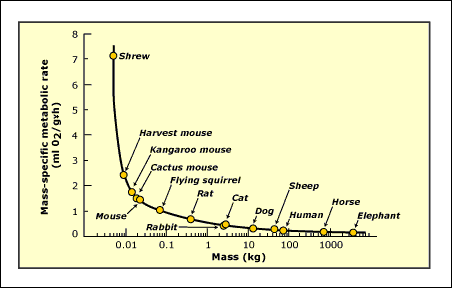This type of research could make it possible to infer life-history information of extinct species, providing that genomic data is present.
The research focused on three life-history traits.
1) Generation time
The correlation between generation time and mutation rate is quite easy to grasp. The more generations per given unit of time, the more chance of something going wrong. And, in fact, the study found that generation time was the most significant life-history indicator for mutation rate, accounting for roughly 40% of the mutation-rate variation among species.
Another finding is that generation time also affects the male mutation bias (higher mutation rate in sperm cells than in eggs). Female mammals are born with their lifetime supply of egg cells already present, whereas males keep producing sperm throughout their lifetime. Thus, sperm cells replicate more often and run a higher risk of exhibiting a mutation in species with a relatively long generation time.
2) Metabolic rate
It was hypothesized that a high metabolic rate (daily amount of energy expended), would lead to a higher mutation rate. The idea is that a high metabolism produces more free radicals, which can increase the amount of mutations.
The study found that metabolic rate turns out to be a moderate predictor of mutation rate. The problem is that this factor is closely related to the previous one, as smaller animals tend to have a higher metabolic rate (see figure 1).

Figure 1: Relation between mass-specific metabolic rate and mass.
(Source: http://www.cnsweb.org/digestvertebrates/WWWEdStevensCDEnergy.html, from Schmidt-Nielsen, K. 1984. Scaling: Why is Animal Size So Important? Cambridge: Cambridge University Press)
3) Sperm competition
In species where the female mates with more than one male, there is competition between the sperm of these different males - aptly termed sperm competition. It is thought that in species where females are more promiscuous, such as chimpanzees, the mutation rate is higher than in species that are more monogamous, such as gorillas. The idea behind this is that, in more promiscuous species, the males produce more sperm, which leads to a higher replication rate of sperm cells, which, in turn, increases the odds of mutations occuring.
Surprisingly, the study did not find a correlation between sperm competition and mutation rate as strongly as was expected.
It would be interesting to see whether these findings correlate with the findings in other animal groups, such as birds, or reptiles, or insects,... .
Reference
PennState Science, News (http://www.science.psu.edu/news-and-events/2011-news/Makova6-2011)




Comments